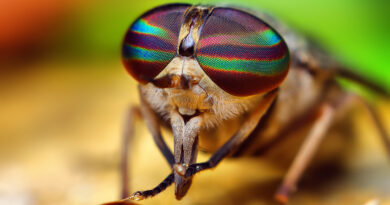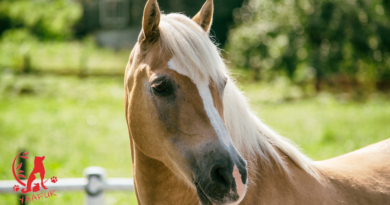Can Horses Eat Bread
Bread: Understanding the Nutritional Composition
Bread is a staple food that is commonly consumed by people around the world. It is typically made from wheat flour, water, yeast, and salt. The nutritional composition of bread can vary depending on the type and preparation method. Generally, bread is a good source of carbohydrates, which provide energy for the body. It also contains small amounts of protein, vitamins, and minerals. However, bread is generally low in fiber and can be high in sodium if salt is added during the baking process. Additionally, some types of bread may contain added sugars or fats, which can contribute to higher calorie content. Therefore, it is important to consider the overall nutritional profile of the bread being consumed.
When it comes to feeding bread to horses, understanding the nutritional composition is essential. While horses are herbivores, their digestive system differs from that of humans. Horses have a specialized digestive system that is designed to efficiently break down and extract nutrients from grass and hay. The primary component of a horse’s diet should be forage, which provides the necessary fiber for their digestive health. When considering the nutritional composition of bread, it is important to note that it is not a natural part of a horse’s diet. Bread is typically higher in carbohydrates and lower in fiber compared to forage. Feeding large amounts of bread to horses can disrupt their digestive balance, potentially leading to digestive discomfort or other health issues.
Digestive System of Horses: How it Differs from Humans
The digestive system of horses differs significantly from that of humans. Unlike humans, horses are herbivores, which means their digestive system is specialized for processing plant-based foods. Horses have a unique digestive structure that allows them to efficiently extract nutrients from a diet primarily consisting of roughage, such as grass and hay.
One key difference is the size and function of the horse’s stomach. While the human stomach is relatively large and can hold a significant amount of food, the horse’s stomach is relatively small and can only hold about two to four gallons of food. This is because the horse’s digestive system is designed for frequent grazing throughout the day, as opposed to humans who typically consume larger meals.
Additionally, unlike humans, horses have a large, specialized portion of their digestive system known as the cecum. The cecum acts as a fermentation vat, breaking down fibrous material and extracting nutrients from the plant matter. This allows horses to digest cellulose, a complex carbohydrate found in plants that humans are unable to break down.
Overall, understanding the unique characteristics of the horse’s digestive system is essential for providing them with a diet that meets their nutritional needs. Taking into account these differences can help ensure the health and well-being of our equine companions.
Common Foods Horses Can Safely Consume
Horses are herbivores, which means their diet primarily consists of plant material. They have a unique digestive system that allows them to efficiently break down fibrous vegetation. In their natural habitat, horses graze on grass and other forage, which provides them with the necessary nutrients for proper growth and functioning. Therefore, it is essential to ensure that the foods horses consume are safe and suitable for their digestive system.
Among the common foods that horses can safely consume are fresh fruits and vegetables. Apples, carrots, and bananas are favorite treats among horses and are often used as rewards during training sessions. These fruits are not only tasty for horses but also contain essential vitamins and minerals. Additionally, vegetables such as carrots and peas can be added to a horse’s daily feed for added variety and nutritional value. It is vital to remember that when introducing new foods to a horse’s diet, it should be done gradually to avoid any digestive upset.
Bread and Its Potential Effects on Equine Digestion
When it comes to feeding bread to horses, understanding its potential effects on equine digestion is important. Bread is typically made from wheat flour, yeast, water, and various additives. While humans may find it tasty and filling, horses have a unique digestive system that differs significantly from ours.
One potential effect of feeding bread to horses is the disruption of their delicate digestive balance. Horses are herbivores, adapted to consume high-fiber diets. The rich, processed nature of bread can cause rapid fermentation in the hindgut, leading to an imbalance of gut bacteria and potential digestive disturbances. Additionally, bread is high in starch, which may not be efficiently digested by horses and could contribute to issues such as colic or laminitis. Careful consideration of the potential effects of bread on equine digestion is crucial to ensure the health and well-being of these magnificent animals.
Potential Risks of Feeding Bread to Horses
Bread, while a staple in the human diet, may not be suitable for horses. Feeding bread to horses can pose certain risks to their digestive health. One potential risk is the high carbohydrate content of bread, which can disrupt the delicate balance of a horse’s digestive system. Horses have a limited ability to break down carbohydrates, especially those that are rapidly fermentable, which can potentially lead to digestive discomfort and issues such as colic.
Another risk of feeding bread to horses is the possibility of introducing harmful additives or ingredients into their diet. Many commercially available breads contain preservatives, artificial flavors, and excess salt or sugar, which can be detrimental to a horse’s health. These additives may not only upset the horse’s digestive system but can also contribute to weight gain, metabolic disorders, and other health complications.
It is crucial for horse owners and caretakers to be aware of the potential risks associated with feeding bread to horses. By understanding the unique digestive needs of horses and making informed decisions about their diet, we can ensure their overall health and well-being.
Signs of Digestive Discomfort in Horses
Signs of digestive discomfort in horses can manifest in various ways. One common indication is a change in appetite or eating behavior. Horses experiencing digestive issues may suddenly lose interest in their food or eat less than usual. On the other hand, some horses may exhibit excessive hunger and consume their food rapidly. Additionally, changes in fecal consistency and frequency can serve as red flags for digestive discomfort. Horses with digestive problems may produce loose, watery stool or experience episodes of diarrhea. Conversely, constipation can occur, leading to infrequent or difficult passing of feces. Monitoring a horse’s eating habits and fecal output can provide valuable insights into their digestive health and help detect any potential discomfort they may be experiencing.
Another sign that a horse may be experiencing digestive discomfort is stomach pain or colic. This can be observed through their behavior and overall demeanor. Horses in pain may display restlessness, paw at the ground, roll excessively, or repeatedly look towards their flank. They may also exhibit signs of discomfort such as sweating, increased heart rate, or elevated breathing. It is important to note that these symptoms can vary in severity, and if a horse shows any signs of colic, it is crucial to seek veterinary attention immediately. Early detection and intervention are essential in preventing further complications and ensuring the well-being of the horse.
• Change in appetite or eating behavior
• Excessive hunger or decreased interest in food
• Changes in fecal consistency and frequency (loose stool, diarrhea, constipation)
• Stomach pain or colic symptoms such as restlessness, pawing at the ground, rolling excessively, looking towards their flank
• Signs of discomfort like sweating, increased heart rate, elevated breathing
Alternatives to Bread for Treating Horses
An important factor to consider when treating horses is finding suitable alternatives to bread. While bread may seem like a convenient option, it may not provide the necessary nutritional benefits or digestibility for equine digestion. Instead, horse owners can focus on incorporating healthier and more equine-friendly options into their horse’s diet.
One alternative to bread is the use of fruits and vegetables. These natural foods are packed with essential vitamins and minerals that can benefit a horse’s overall health. Carrots, apples, and bananas are popular choices that horses tend to enjoy. Not only do these items provide added nutrients, but they can also serve as an enticing treat for training or rewarding purposes. Additionally, oats or other grains specifically formulated for horses can be used as a healthy option, as they are designed to meet equine dietary needs.
Feeding Bread to Horses: Expert Opinions
Feeding bread to horses is a topic that has sparked much debate among experts in the field. While some argue that bread can be a harmless treat for horses, others caution against including it in their diet. One of the main concerns raised by those who advise against feeding bread to horses is its potential impact on their digestive system. They argue that horses have a unique digestive system that is more sensitive than humans’, and bread can disrupt the delicate balance of their gut flora. Proponents of feeding bread to horses, on the other hand, suggest that in moderation, it can be a safe and enjoyable addition to their diet. They argue that bread provides horses with valuable nutrients and can also be used as a tool for training and bonding.
Ultimately, the decision to feed bread to horses should be made with careful consideration of the individual horse’s needs and overall health. Consulting with a veterinarian or equine nutritionist is recommended to assess whether adding bread to a horse’s diet is appropriate. It is important to note that even if bread is deemed safe for a horse, it should always be given in moderation and as part of a balanced diet. Monitoring the horse for any signs of digestive distress is crucial and any concerns should be addressed promptly. With expert guidance and proper vigilance, feeding bread to horses can be a rewarding and enjoyable experience for both horse and owner.
Tips for Safely Introducing Bread into a Horse’s Diet
Introducing bread into a horse’s diet should be done with caution and consideration for the animal’s digestive system. It is important to start slowly and gradually increase the amount of bread given to the horse over time. This allows the horse’s gastrointestinal tract to adjust and prevents any sudden digestive disturbances. Additionally, it is advisable to choose bread that is low in sugar and additives, as these can be harmful to the horse’s health. Opting for whole grain bread without added sweeteners or preservatives is a more suitable choice.
Before feeding the horse bread, it is essential to consult with a veterinarian or equine nutritionist. These professionals can provide valuable advice tailored to the specific needs and circumstances of the horse. They can guide you in determining the appropriate amount of bread to include in the horse’s diet and ensure that it complements the horse’s overall nutritional requirements. Furthermore, they may suggest suitable alternatives to bread that can be used as treats or supplements for the horse. By seeking expert advice, you can make informed decisions and prioritize the horse’s well-being when introducing bread into its diet.
Conclusion: Making Informed Decisions About Feeding Bread to Horses
In conclusion, it is important for horse owners to carefully consider the potential effects and risks of feeding bread to their equine companions. While bread may seem like a convenient and tasty treat, it is crucial to remember that horses have a unique digestive system that differs from humans. The high carbohydrate content and lack of significant nutritional value in bread can pose challenges for equine digestion, potentially leading to digestive discomfort or even more serious health issues.
Instead of relying on bread as a go-to treat for horses, it is advisable to explore alternative options that are more suitable for their dietary needs. There are numerous horse-friendly snacks available on the market, specifically designed to provide nutritional benefits without compromising digestion. It is also crucial to monitor any signs of digestive discomfort in horses, such as changes in appetite, colic symptoms, or loose stools, and seek veterinary advice if necessary.
By making informed decisions about feeding bread to horses, horse owners can prioritize their equine companions’ health and well-being. It is crucial to consider the unique aspects of equine digestion and choose appropriate alternatives for treats and dietary supplementation. The key is to provide a balanced and nutritious diet that supports the horse’s overall health and avoids potential complications associated with feeding bread.
Can horses safely eat bread?
While horses can eat bread in moderation, it is not recommended as a staple part of their diet.
What is the nutritional composition of bread?
Bread is primarily composed of carbohydrates, with varying levels of protein and fat depending on the type of bread.
How does a horse’s digestive system differ from that of humans?
Horses have a unique digestive system that is designed for a diet of primarily forage, unlike humans who can tolerate a wider variety of foods.
What are some common foods that horses can safely consume?
Horses can safely eat hay, grass, grains, fruits, and vegetables. However, it is important to introduce new foods gradually and ensure they are suitable for equine consumption.
What potential effects can bread have on equine digestion?
Bread can cause digestive discomfort in horses due to its high carbohydrate content and the fact that their digestive system is not well-suited for processing large amounts of bread.
What are the risks of feeding bread to horses?
Feeding bread to horses in excessive amounts can lead to digestive issues such as colic, laminitis, and obesity. It can also displace more nutritious food from their diet.
What are the signs of digestive discomfort in horses?
Signs of digestive discomfort in horses can include colic symptoms like abdominal pain, changes in appetite, changes in manure consistency, and restlessness.
Are there alternatives to feeding bread to horses for treating them?
Yes, there are many alternatives to bread for treating horses, such as commercial horse treats, fruits, vegetables, and specialized equine supplements.
What do experts say about feeding bread to horses?
Experts generally advise against feeding bread to horses due to its potential negative effects on equine digestion and overall health.
How can I safely introduce bread into a horse’s diet?
If you still choose to feed bread to your horse, it should be done in small quantities and as an occasional treat. Monitor your horse for any signs of digestive discomfort and adjust accordingly.
What is the conclusion about feeding bread to horses?
It is important to make informed decisions about feeding bread to horses, considering their unique digestive system and potential risks. It is generally recommended to avoid feeding bread to horses and opt for more suitable alternatives.




